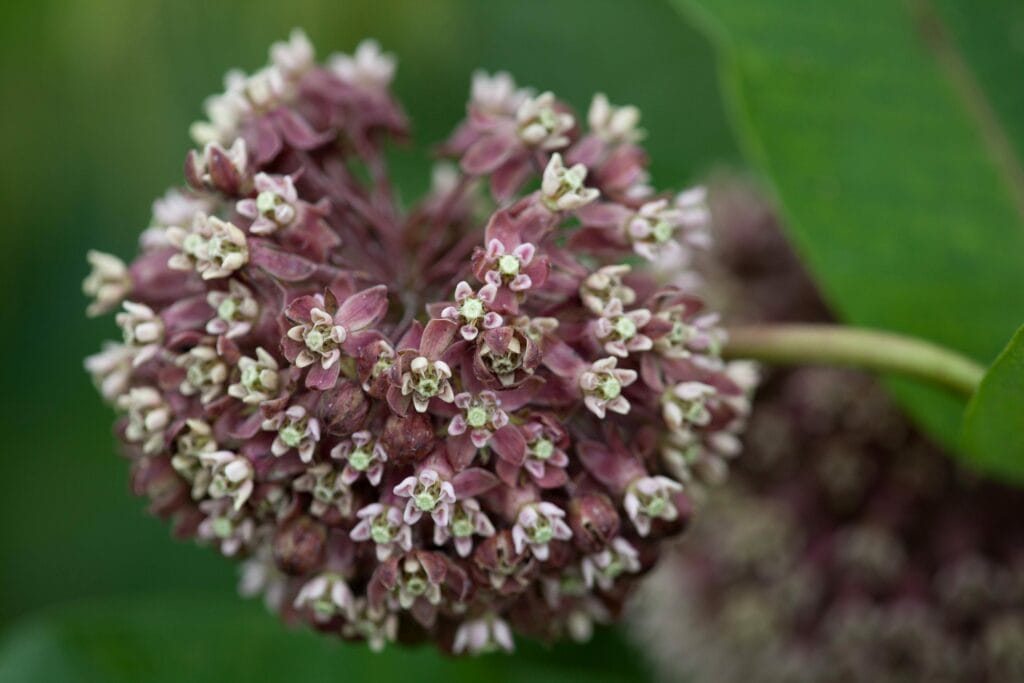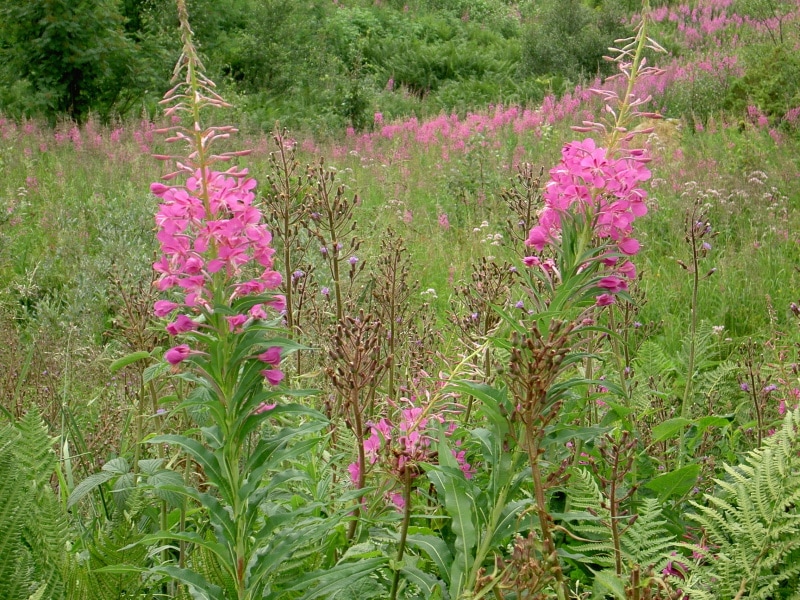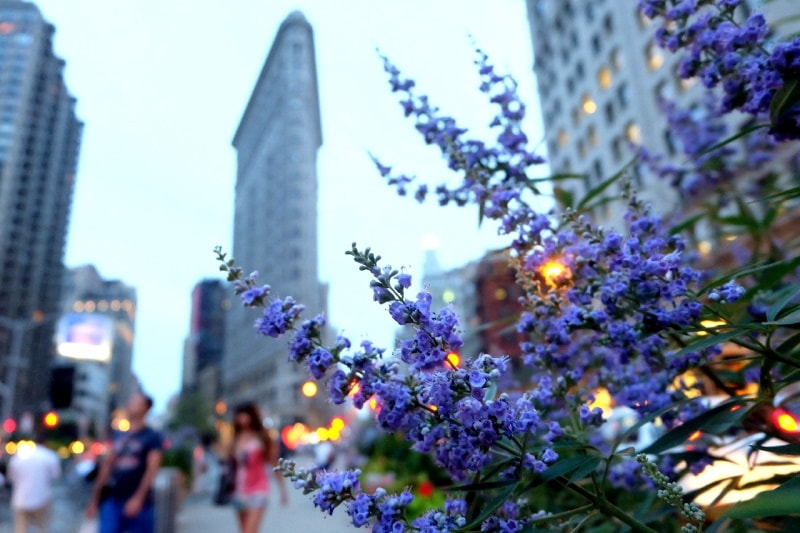8 Wildflowers of North Dakota (Identification Guide With Pictures)
-
Pete Ortiz
- Last updated:

You might think wildflower refers to a specific family or type of flower, but it’s actually just a catch-all term to refer to any uncultivated flower that grows in nature without human intervention. Although known as the nation’s top producer of wheat, North Dakota has its fair share of wildflower species that grow freely all over the state.
Let’s check out some of the most common and notable wildflowers that grow in the Peace Garden State.
The 8 Wildflowers of North Dakota
1. Wild Prairie Rose

| USDA Hardiness Zones: | 5 to 8 |
| Average mature height: | 1 to 2.5 feet tall |
| Type: | Perennial |
It’d be a crime not to start out with North Dakota’s state flower, which grows on roadsides, pastures, meadows, and grassland all over the state. It was officially adopted as the state flower in 1907 after being chosen by the first graduates of the University of North Dakota in 1899. The wild prairie rose comes in red, yellow, white, or pink. No matter the color, they can be identified by their five bright petals with a burst of yellow added by a central stamen cluster.
2. Yarrow

| USDA Hardiness Zones: | 3 to 9 |
| Average mature height: | 2 to 4 feet tall |
| Type: | Perennial |
Yarrow has been used in European herbal remedies for ages because it’s thought to improve digestion and reduce gastrointestinal issues. It’s also known for its showy clusters of white flowers with stamens at the center, which poke out above fern-like foliage. Yarrow is prized for its ability to survive periods of drought as well as distressed conditions. You can find it mingling with other wildflowers on roadsides, clearings, and meadows all over North Dakota.
3. Common Milkweed

| USDA Hardiness Zones: | 3 to 9a |
| Average mature height: | 2 to 5 feet tall |
| Type: | Perennial |
Milkweed is a tall, reed-like plant that grows beautiful, delicate pink-purple blossoms above strikingly thick green leaves. They’re beloved by pollinators and beneficial wildlife like butterflies, bees, wasps, and more, but there’s a dark side to this plant—common milkweed spreads like wildfire and starves other plants of nutrients. If you want to plant some, do it well away from any important plants.
4. Heal-all

| USDA Hardiness Zones: | 5 to 9 |
| Average mature height: | 12 to 16 inches tall |
| Type: | Perennial |
Heal-all is one of the most common and unusual-looking wildflowers native to North Dakota, spreading in aggressive clumps across meadows and fields. For that reason, many people use them as ground cover or on garden borders. Like many wildflowers, Heal-all is remarkably aggressive when given room to sprawl. You can spot Heal-all by its layered purple blossoms that stand tall and proud above its luscious oblong foliage.
5. Bee Balm

| USDA Hardiness Zones: | 3 to 9 |
| Average mature height: | 3 to 4 feet tall |
| Type: | Perennial |
Bee balm is also known as horsemint and wild bergamot, though it’s not the same stuff you find in Earl Grey tea. As the name implies, bee balm is a favorite of bees, birds, and other pollinators. They flock to its dramatic and frilly lilac blooms in fields, dry grasslands, prairies, and roadsides from miles around. Bee balm is known to spread aggressively, but it’s not quite invasive enough to be a problem in most gardens.
6. Fireweed

| USDA Hardiness Zones: | 2 to 7 |
| Average mature height: | 2 to 5 feet tall |
| Type: | Annual or perennial |
Sometimes called willow herb, fireweed is a tall, showy wildflower with spiky pink-purple blooms. The plant gets its name from the fact that it’s the first plant to grow back after wildflowers. Fireweed is very hardy and was even observed growing in Washington State just a year after the catastrophic Mount St. Helens eruption! Because it attracts pollinators like bees and birds to areas leveled by forest fires, fireweed is environmentally important to help repopulate devastated biospheres.
7. Chicory

| USDA Hardiness Zones: | 3–10 |
| Average mature height: | 1 to 4 feet tall |
| Type: | Perennial |
You might have heard of chicory because it is used as an alternative to coffee. However, this is one of the non-native wildflowers you can find in North Dakota. Chicory plants only bloom for one day so you will be lucky to catch sight of these lovely purple flowers. But even if you do not get to see the bloom, use the leaves for a salad because they are quite nutritious!
8. Blue Vervain

| USDA Hardiness Zones: | 3–9 |
| Average mature height: | 2 to 5 feet tall |
| Type: | Perennial |
North Dakota is home to many purple or bluish purple plants and the tall blue vervain is definitely one that you want to see! These drought-resistant flowers bloom in the early summer to early fall and need full sun to grow to their full height of around 5 feet. The blue vervain also attracts bees, honey bees, and various small butterflies.
Conclusion
North Dakota is home to many purple or bluish-purple plants, and the tall blue vervain is definitely one that you want to see! These drought-resistant flowers bloom in the early summer to early fall and need full sun to grow to their full height of around 5 feet. The blue vervain also attracts bees, honey bees, and various small butterflies.
Featured Image Credit: Demiahl, Pixabay
Contents


